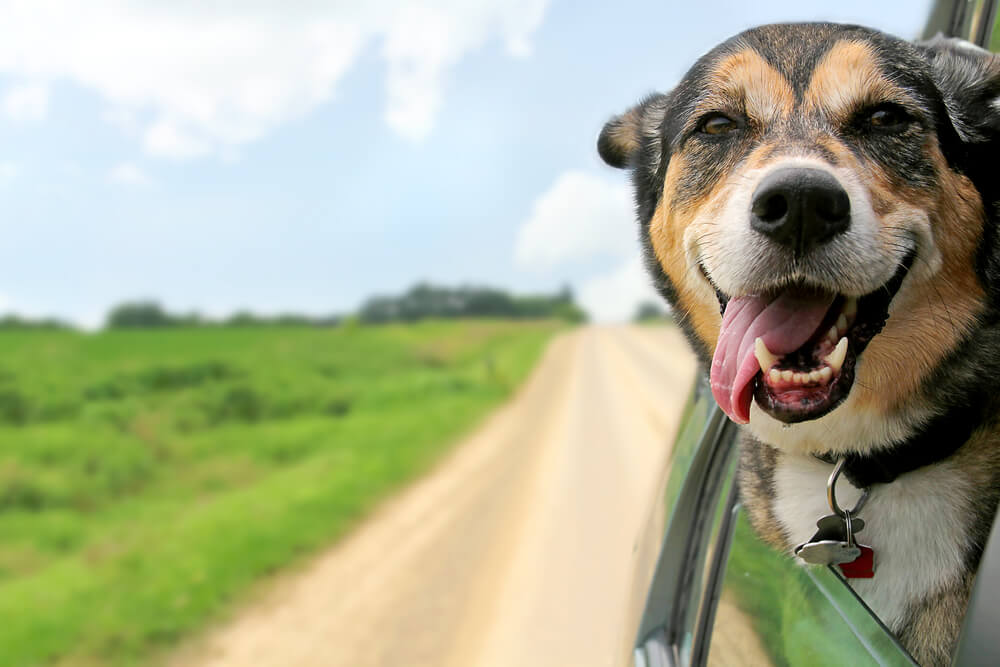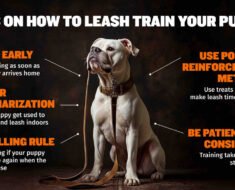If your dog gets car sick, you know how stressful road trips can be—for both of you. Watching your furry friend feel uneasy or nauseous makes every drive a challenge.
But it doesn’t have to be that way. Imagine smooth, relaxed trips where your dog stays calm and happy. You’ll discover simple, effective ways to prepare your car-sick dog for the road. By following these tips, you can turn tense rides into enjoyable adventures.
Keep reading, and make your next trip easier for you and your best friend.
Causes Of Car Sickness In Dogs
Motion sensitivityis a common cause of car sickness in dogs. Some dogs feel dizzy or sick from the car’s movement. Their inner ear senses motion, which can upset their stomachs.
Anxiety and stresscan make car rides harder. Loud noises, new places, or the car itself may scare dogs. This fear can cause nausea or vomiting during trips.
Previous negative experiencescan lead to car sickness too. If a dog once felt sick or scared in a car, it may worry about future rides. This worry can make symptoms worse.
:strip_icc()/cure-puppy-car-sickness-2804799-hero-540f3dd25a7e4df78ccabcf1e3d47877.jpg)
Credit: www.thesprucepets.com
Signs Your Dog Is Car Sick
Drooling and vomitingare common signs of car sickness in dogs. Some dogs may start to drool more than usual. Vomiting can happen if the sickness gets worse. Restlessness and whiningshow your dog feels uneasy. They might move around a lot or make soft noises. This means they are uncomfortable during the ride.
Lethargy or excessive yawningcan also signal car sickness. Your dog may seem tired or sleepy. Yawning often means they feel stressed or unwell. These signs help you know when your dog needs a break or some care.
Pre-trip Preparations
Start by taking your dog on very short car rides. Let them get used to the sounds and movements. Slowly increase ride time over days or weeks. This helps reduce fear and sickness.
Use a comfortable harness or crateto keep your dog safe. Soft bedding adds extra comfort. Make sure the seat or crate is secure and stable to avoid sudden moves.
| Feeding Tips | Hydration Tips |
|---|---|
| Feed your dog a small meal 2-3 hours before the trip. | Offer fresh water before the ride but not too much. |
| Avoid heavy or fatty foods before traveling. | Bring a water bottle and bowl for breaks. |
| Watch for signs of nausea after eating. | Keep water accessible but don’t overhydrate during the ride. |

Credit: www.purepawsvet.com
Calming Techniques During Travel
Natural remedieslike ginger or chamomile can help ease dog nausea. Small doses work best, so check with a vet first. These herbs are gentle and safe for most dogs.
Playing soft, calming musichelps distract your dog from motion sickness. Classical or gentle tunes create a relaxing atmosphere during travel. Avoid loud or sudden sounds that might scare your dog.
Keeping a calm environmentinside the car is key. Speak softly and avoid sudden movements. A quiet space helps your dog feel safe and less anxious. Use a comfortable bed or blanket to make your dog feel cozy.
Training And Behavior Strategies
Positive reinforcementhelps dogs learn good car behavior. Reward your dog with treats and praise when calm inside the car. This makes them feel safe and happy. Short trips with rewards build good habits.
Desensitization exercisesreduce car sickness over time. Start by sitting in the parked car with your dog. Let them explore and relax. Next, turn the engine on, but don’t drive yet. Gradually increase driving time in slow, short trips.
A safe spacein the car helps your dog feel secure. Use a crate or a special dog seat belt. Add a soft blanket or favorite toy. This comfort zone lowers stress and motion sickness.
When To Consult A Veterinarian
Consulting a veterinariancan help manage your dog’s car sickness. They can suggest medication optionsthat might ease nausea and discomfort during trips. Some medicines are safe and effective for dogs but always follow the vet’s advice carefully.
Health checks are important to find any underlying issuescausing sickness. Problems like ear infections or motion sensitivity can worsen symptoms. Treating these issues early can make travel easier and more comfortable for your dog.
For severe cases, vets may offer specialized advice or treatment plans. This might include behavior techniques or specific drugs. Following their guidance ensures your dog stays calm and relaxed while traveling.

Credit: blog.myollie.com
Frequently Asked Questions
How Can I Prevent My Dog From Getting Car Sick?
To prevent car sickness, start with short trips to build tolerance. Keep your dog calm, avoid feeding before travel, and provide fresh air. Use comfort items like blankets or favorite toys to ease anxiety.
What Foods Should I Avoid Before Traveling With My Dog?
Avoid feeding your dog heavy meals or dairy products before travel. Stick to light, bland snacks several hours prior. This helps reduce nausea and minimizes the risk of vomiting during the trip.
Are There Natural Remedies For A Car-sick Dog?
Yes, ginger and chamomile treats can help calm an upset stomach. Always consult your vet before using supplements. Natural remedies may ease nausea but don’t replace professional advice.
How Long Should My Dog’s Car Trips Be Initially?
Start with trips under 15 minutes to help your dog adjust. Gradually increase travel time as your dog becomes more comfortable. Short, frequent rides reduce stress and motion sickness.
Conclusion
Preparing a car-sick dog takes patience and small steps. Start with short trips to build comfort. Bring familiar toys and take breaks for fresh air. Keep the car cool and quiet to ease stress. Watch your dog’s behavior and adjust the plan as needed.
With care, your dog can enjoy calm rides. Road trips become fun for both of you. Keep trying, and each journey gets better. A happy dog makes every trip a good memory.





